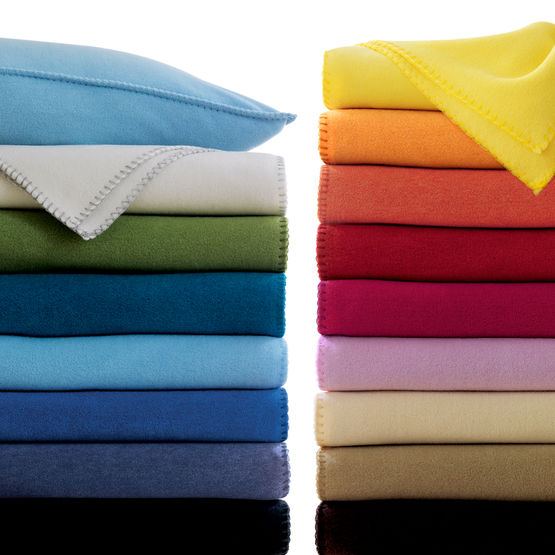 | ||
Polar fleece is a soft napped insulating fabric made from a type of polyester called polyethylene terephthalate (PET) or other synthetic fibers. Other names for this fabric are "Polar Wool", "Vega Wool", or "Velo Wools". Despite names suggesting the product is made of natural material, polar fleece is 100% polyethylene terephthalate.
Contents
Uses
Polar fleece is used in jackets, hats, sweaters, sweatpants, cloth nappies, gym clothes, hoodies, inexpensive throw blankets, and high-performance outdoor clothing. It can be made partially from recycled plastic bottles and is very light, soft and easy to wash.
History
One of the first forms was Polar Fleece, created in Massachusetts in 1979 by Malden Mills, now Polartec LLC. This was a new, light, and strong pile fabric meant to mimic—and in some ways surpass—wool. Aaron Feuerstein intentionally declined to patent Polar fleece, allowing the material to be produced cheaply and widely by many vendors, leading to the material's quick and wide acceptance.
Characteristics
A lightweight, warm, and soft fabric, fleece has some of wool's good qualities but weighs a fraction of the lightest available woolens. Polar fleece garments traditionally come in different thicknesses: micro, 100, 200, and 300, with 300 being the thickest and least flexible.
It is hydrophobic, holding less than 1% of its weight in water. It retains much of its insulating powers even when wet. It is machine washable and dries quickly. It is a good alternative to wool (of particular importance to those who are allergic or sensitive to wool). It can also be made out of recycled PET bottles, or even recycled fleece. Despite its fuzzy appearance and feel, it is not flammable, but instead melts when exposed to flame.
Regular polar fleece is not windproof and does not absorb moisture (although this is often seen as a benefit, per above). Fleece readily generates static electricity, which causes the accumulation of lint, dust, and pet hair. It is also susceptible to damage from high temperature washing, tumble drying or ironing. Lower-quality polar fleece material is also prone to pilling.
Environmental issues
Berners-Lee reckons the average greenhouse gas footprint of polar fleece in manufacturing carpets at 5.55 kg CO2 equivalent per kilo, when produced in Europe. This gives it almost the same carbon footprint as wool, but with greater durability.
Non-recycled fleece is made from non-renewable petroleum derivatives. Even if made of recycled materials, fleece relies on a continued production of non-renewable fossil fuels for the raw material.
When fleece goes through the laundry, it generates microplastics which become part of domestic waste water. Municipal waste water systems often discharge into rivers and oceans. PET does not biodegrade and suspended microplastics are easily ingested by marine life, thus entering the food chain.
